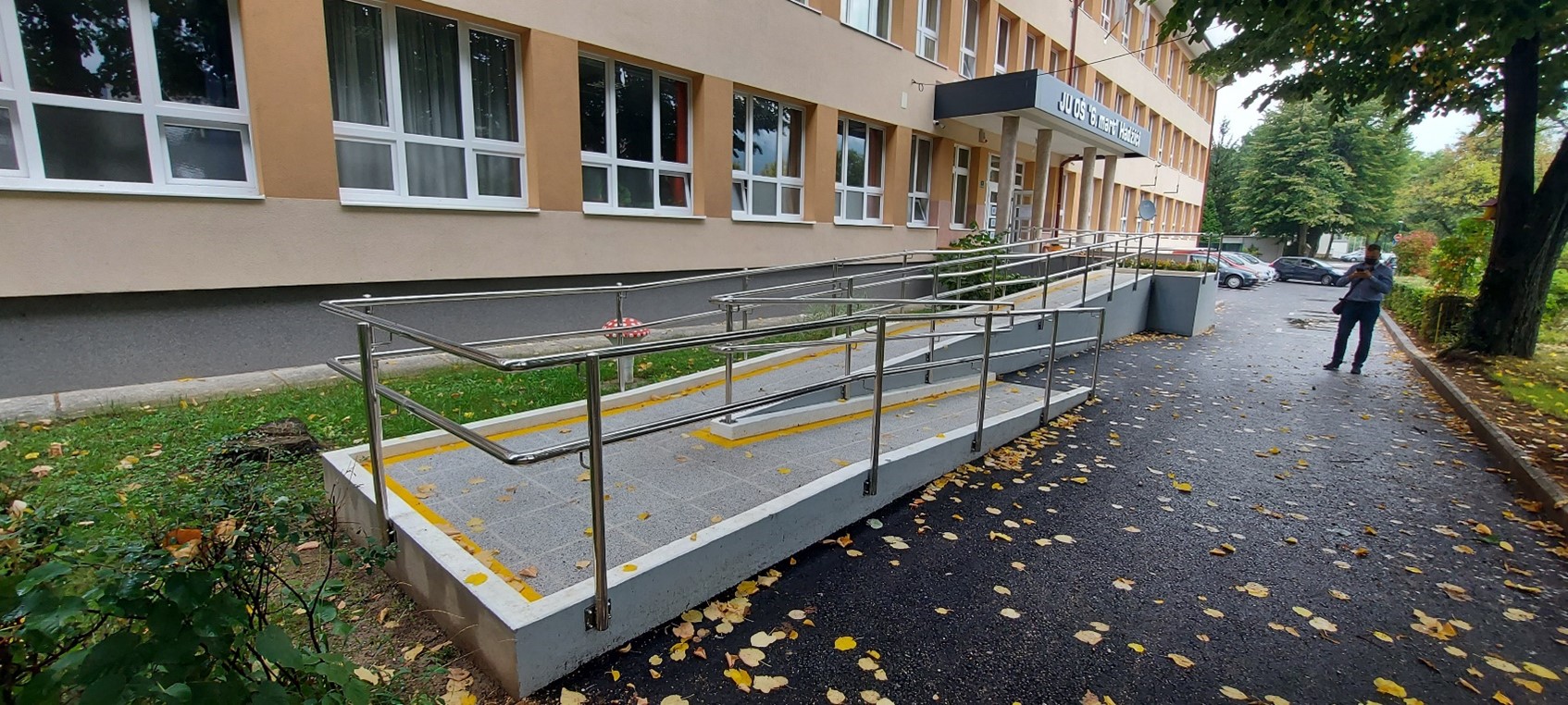Better living conditions for people with disabilities through removal of physical barriers
December 3, 2023

Although the rights of persons with disabilities are regulated by domestic and international regulations, they do not enjoy equal conditions and opportunities in life in BiH and face two types of challenges, systemic and physical.
In the first group are laws, policies, practices or strategies that the authorities design for this group, while in the second are environments that are inaccessible to people with disabilities because of the way they are designed.
Many buildings do not have built-in access for people with disabilities. The sidewalks in front of the buildings are too narrow for wheelchairs and walking aids, door handles are not accessible, city transportation has no ramp, poor lighting creates difficulties for the visually impaired.
In recent years, local authorities in Bosnia and Herzegovina have stepped up their efforts to improve living conditions for people with disabilities, which was also contributed to by the UNDP's Country Infrastracture Development Initiative (CIDI) project. This five-year project (2018-2023) was aimed at improving the quality of life of people in BiH through targeted investments in infrastructure and improvement of public services. It was financed primarily by cantonal and local authorities in Bosnia and Herzegovina, with co-financing from UNDP. The Ministry of Labour, Social Policy, Displaced Persons and Refugees KS is the main investor in activities aimed at removing barriers.
It is estimated that around 60,000 people with disabilities live in Sarajevo Canton and will benefit directly from the project. At the initiative of the Government of Sarajevo Canton (KS), in 2019, within the framework of the CIDI project, activities aimed at eliminating architectural barriers in the area of Sarajevo were launched in order to help people with mobility difficulties through the construction of access and other infrastructure. Knowledge of new technologies helped to create a digital platform called WeMapp that helps people with disabilities to move safely anywhere by mapping the best routes for them in any city.
The WeMapp application is oriented towards creating a map that detects obstacles and accessibility, and provides users with personalized routes based on their motor skills. In order to support the initial mapping efforts that are necessary for the development of the application, in April 2022, the UNDP Accelerator Lab conducted a test mapping with the students of the High School of Construction and Geodesy in Sarajevo. The students managed to identify more than 150 obstacles for people with mobility difficulties within an hour in the center of Sarajevo.
A total of 27 institutions in the field of education, healthcare, social protection and other public institutions are fully adapted for use by people with mobility difficulties. Concrete interventions were implemented on the installation of elevators, platforms, access ramps and adaptation of sanitary facilities for persons with disabilities.
Every object or location where a physical or other barrier has been removed is a small victory towards the achievement of the goal that our entire society strives for - a life without discrimination and restrictions in which everyone is equal and no one is left behind.

 Locations
Locations


